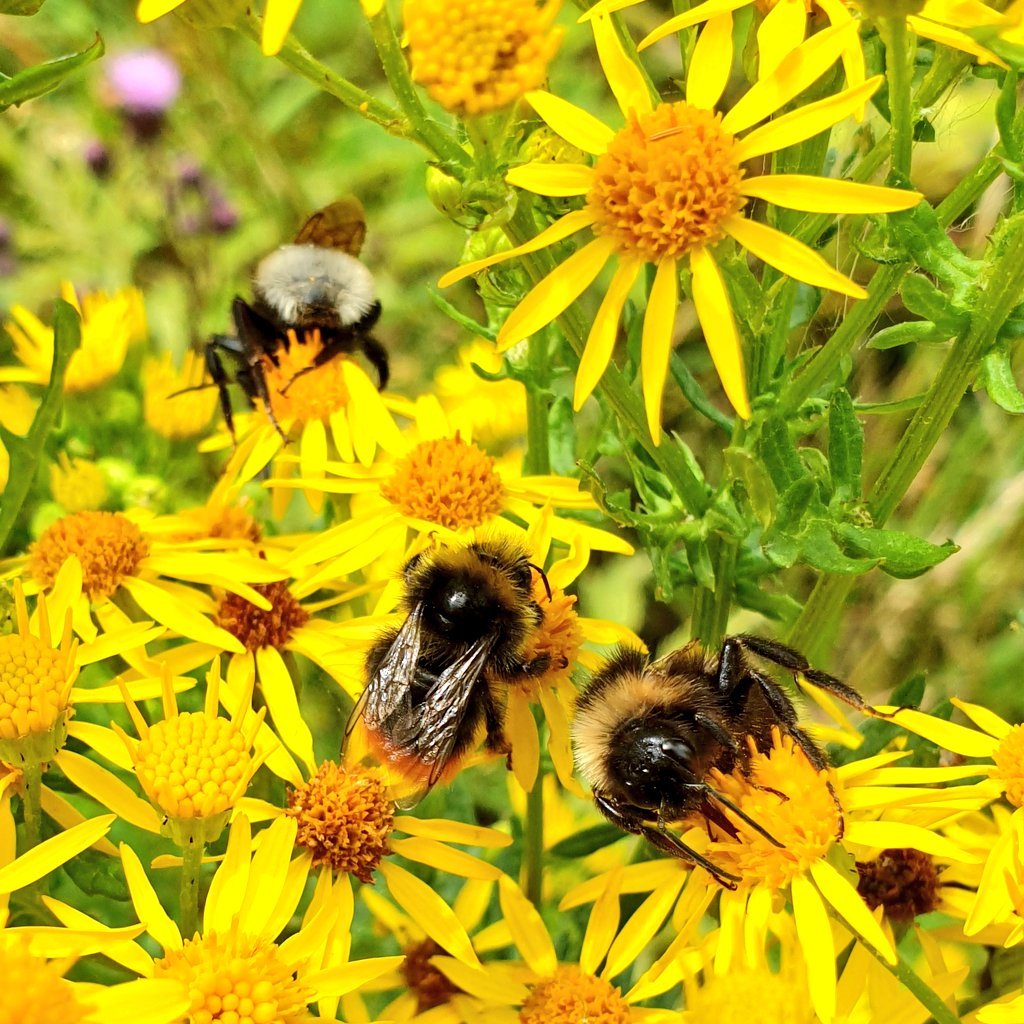Buzzing Bumblebees on Hampstead Heath
Now the weather is warming up and summer flowers are starting to bloom, we’ve spent a lot of time looking at pollinators in our new meadow areas and school bug hunts on Hampstead Heath and ahead of National Insect Week walk.
Besides butterflies, which we monitor, bumblebees are the most prominent of our pollinators. Being big, buzzy and fuzzy they are easy to engage people with, though not something we encourage children to catch! Fortunately, although they can sting, bumblebees are very docile and only use it as a last resort if grabbed or if their nest is messed with.
There are 24 species of Bumblebees in the UK, including the ‘Big 8’ commonly found in gardens and parks. Hampstead Heath is home to at least 7 of these, plus others. Identifying bumblebees can be quite tricky since a few have the classic yellow and black stripes, they vary in the colour of their bodies and their bottoms! Some more easily identified on the Heath are the Red-tailed Bumblebee (black with a red bottom), Common Carder Bee (ginger brown), Early bumblebee (Striped with an orange rear) and the Tree Bumblebee (ginger thorax, black abdomen and white rear).
A Common carder bee on Red Clover.
A Buff-tailed bumblebee on Red Clover
The Buff-tailed bumblebee is the commonest species and one of the largest, the huge queens which many people notice in spring have the namesake off-white tail. They fly low over the ground seeking small mammal burrows to nest in- we have found nests in vole holes under our reptile mats. Generally their colony peaks in summer with up to 500 female workers (the queen’s daughters) and raise males in late summer/early autumn, which mate with queens form other nests. Only the new queens survive the winter, going into torpor underground.
However, with climate change this situation has changed. New queens set up winter-active colonies, with workers foraging on winter flowers like winter honeysuckle, snowdrops and mahonia. This makes it important to grow winter flowers in gardens as we have done in our spaces at Whitestone and Savernake Road.
A queen Buff-tailed feeds from a Spring crocus.
A winter worker Buff-tailed forages from a Hellebore at Whitsetone Garden.
All bumblebees need a range of flowers through spring and summer to keep their colonies going. Shrub blossoms like blackthorn and hawthorn are crucial spring nectar sources, which we’ve provided by planting mixed native hedging. In summer, wildflower meadows provide a richness and diversity of flora that caters for all bumblebee species. We’re pleased to see many visiting our new meadow areas around the Savernake road entrance this year, as well as at the sparrow site on Parliament Hill.
Ragwort is great for bees in late summer.
Male bumblebees on Spear Thistle
If you would like to learn more about bumblebees and other insects, you can join our bug walk on the 27th of June, which coincides with National Insect Week. Check our What’s on page for details.






